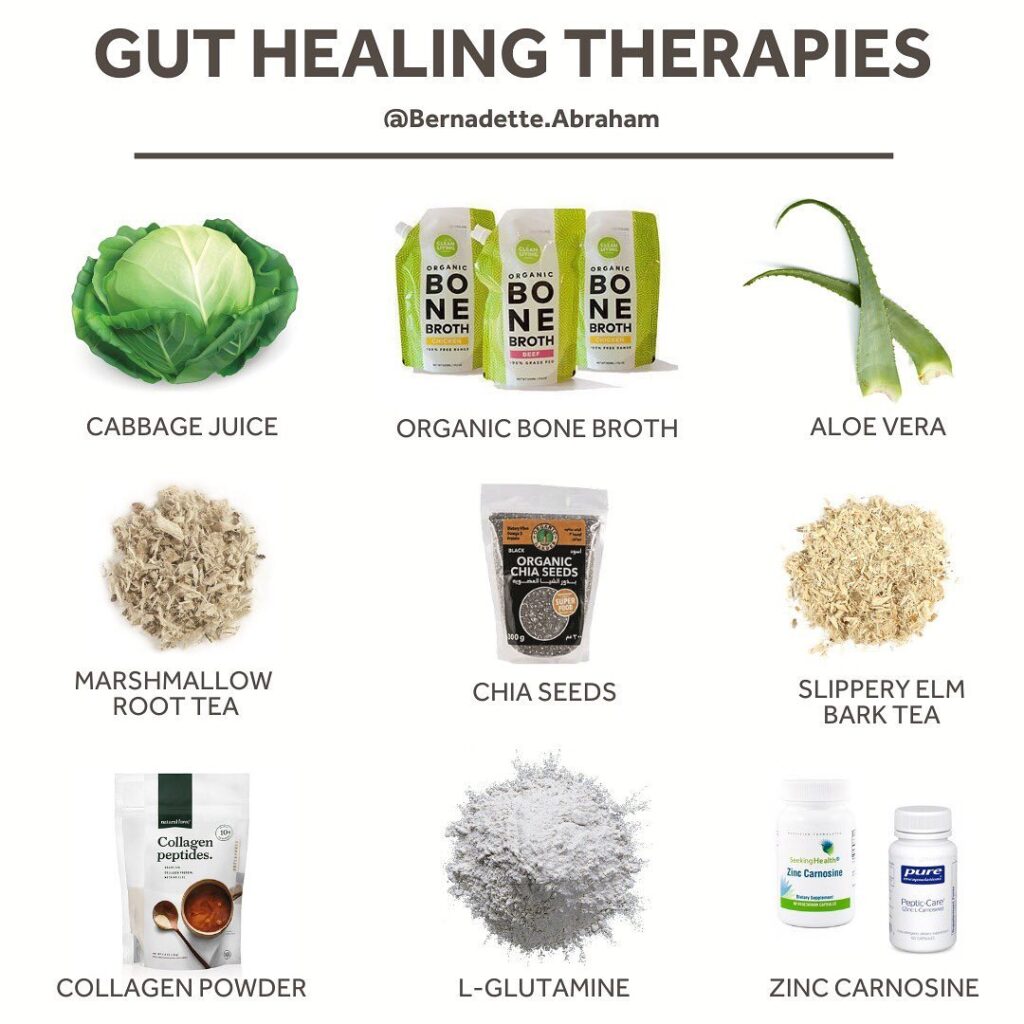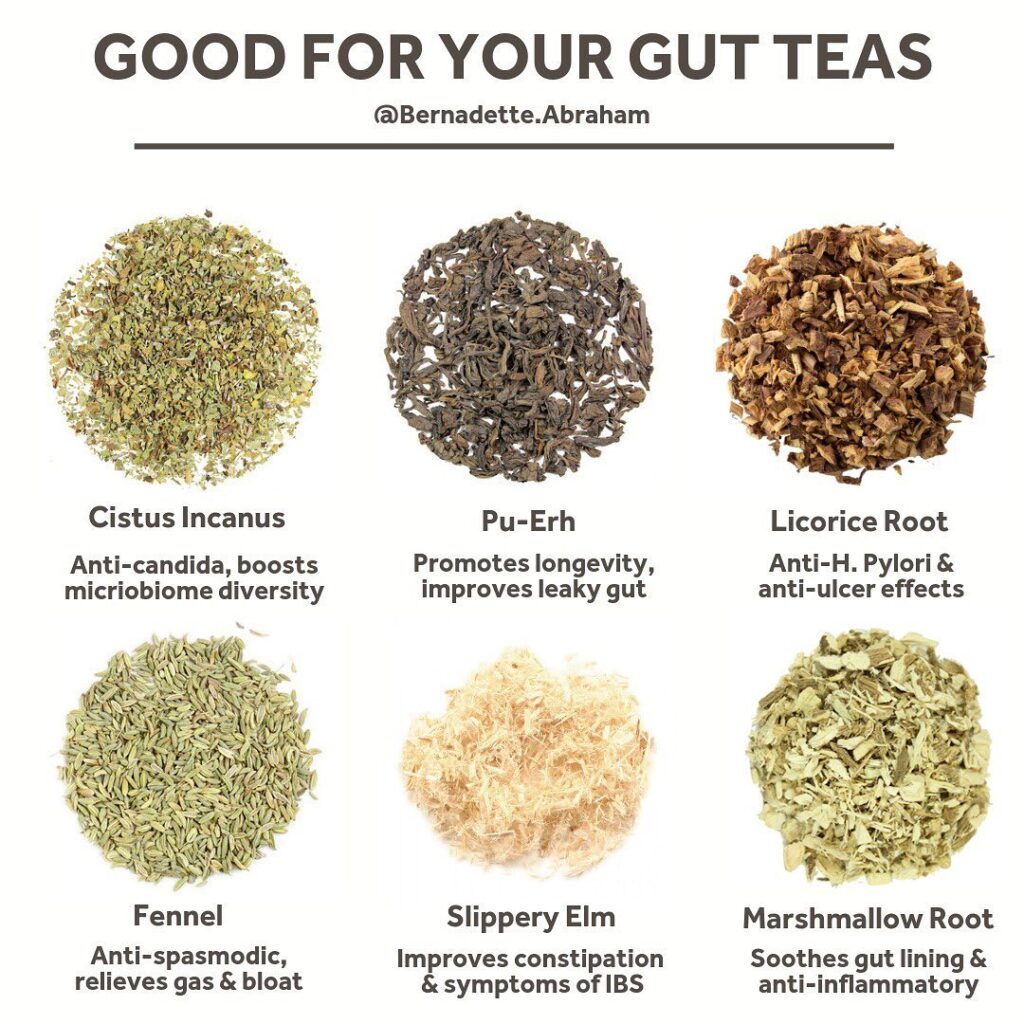Gut Healing

In my post Is Leaky Gut Real I defined leaky gut and explained how it happens with common signs & symptoms.
Now let’s tackle the mother-load you’ve all been waiting for: how to fix leaky gut!
Just to clarify – leaky gut is not a disease; it’s a symptom and one that I address using the ‘3 R’ strategy; Remove, Replenish & Repair.
We need to ‘remove’ the insults; ‘replenish’ the body with what it needs, and finally ‘repair’ the damage. There’s work to be done!
If you jump straight to the ‘repair’ phase without removing the causes and supporting digestion… well, it’s like trying to fill a bathtub with an open drain.
✅ So, rule #1 – Remove the triggers:
The cause is usually an accumulation of daily insults which can be grouped into 3 categories: inflammatory foods, toxins & infections.
✔️Eliminate or reduce these as much as you can and make an effort to switch to healthier alternatives.
✔️For example, check out EWG.org to find less toxic personal care products;
✔️Choose safer anti-inflammatories like Meriva/curcumin, boswellia & high quality Omega-3 fish oil, and work with a functional practitioner to get rid of intestinal infections.????
✅ 2. Replenish digestive function & nutrients:
✔️Practice better eating hygiene! Don’t eat in a rush or when you’re stressed. Eat slowly, calmly & take the time to properly CHEW your food. Simple – but oh so powerful!
✔️Add back in the raw ingredients needed to support proper digestion and absorption like digestive enzymes, hydrochloric acid, bile acids, and probiotics.
✔️Optimize vitamin A, D & zinc
✅ 3. Repair:

✔️Use mucilaginous herbs and gut healing nutrients as pictured above to repair the intestinal lining.⚠️ Please work with a practitioner for correct dosages & contraindications.
✔️Finally, give it time! True healing requires effort & patience, but you CAN do it!
LOOKING FOR SPECIFIC TEAS TO SUPPORT YOUR GUT HEALTH?
@ergogenic_health and I explore some useful gut health teas that nourish the microbiome:

???? CISTUS INCANUS TEA:
Cistus incanus has some extremely potent properties for improving the diversity of the microbiome. .
It is well known for its excellent anti-candida properties and biofilm busting effects.
HOW TO USE?
Cistus tea is best re-brewed 3-4 times over. This extrapolates all the essential compounds and flavonoids from the herb.
⚠️WARNING:
Cistus tea can initially cause ‘detoxification’ like symptoms. Go low and slow.
???? PU-ERH TEA:
Popularised by the all-time-biohacker @timferriss – this fermented tea, mainly produced in the Yunnan province of China is mostly known for promoting longevity.
However, it also reduces leaky gut by restoring intestinal wall integrity.
☕ LICORICE ROOT TEA:
Licorice has been reported for enhancing gastric mucus secretion and anti-ulcer activity.
The key flavonoids found within licorice root tea demonstrate beneficial effects on all forms of H. Pylori infections.
⚠️WARNING:
Those with hypertension or heart conditions should seek professional medical advice, as licorice can raise blood pressure and lower potassium levels.
???? FENNEL TEA:
Fennel is part of the Apiaceae family (i.e. carrots/celery) and is well known for relieving indigestion & flatulence via its antispasmodic properties.
Use it for symptomatic relief after meals.
⚠️WARNING:
Those with kidney disease, hypertension or taking beta-blockers should avoid use.
???? MARSHMALLOW ROOT TEA:
Well known for its mucilaginous “slimy” properties, it helps create a protective layer of tissue along the lining of the digestive tract.
The arabinogalactans present in this tea possess anti-inflammatory properties and also stimulates the growth of Lactobacillus bacteria.
Have you tried any of these teas before?